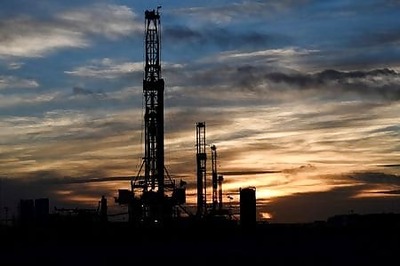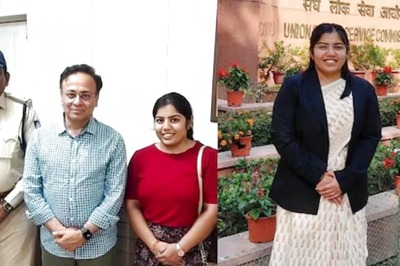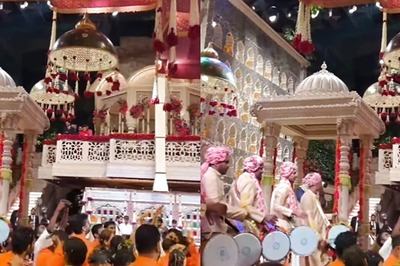
views
India’s development experience since Narendra Modi took over as the country’s Prime Minister flows from the path-breaking policy measures that have prompted the reinterpretation of conventional growth models.
One way of recognising that a wide range of economic and policy reforms must be made is to realise at the outset that the development process encompasses much more than the readily visible economic metrics. Over the last eight years, the Modi government has taken a variety of high-impact decisions and formulated policies that have had a remarkable effect on triggering equitable, broad-based, and sustained development in India. I see this rule of India as a journey to build a ‘New India’ — a strong, capable and self-reliant India.
This period will stand out for the Prime Minister’s unwavering focus to remain steadfast on the journey to build a New India, despite unforeseen obstacles such as the Covid-19 pandemic. When the Covid-19 pandemic pummelled the world in 2020, dark clouds engulfed economies across the world. The sight was menacing and the prospects were uncertain. This prompted one uniform question from everyone: when shall the sun return and the gloom disappear?
This was brought upon by an unimaginable medical emergency that consumed the world, inflicting debilitating consequences that affected lives and livelihoods. Different sectors and industries needed different solutions. Different industries needed different support systems. It was similar to putting to start a complex engineering apparatus.
India, under Prime Minister Narendra Modi, chose a calibrated approach, with a visionary #Aatmanirbhar Bharat plan.
Another defining feature of the last eight years has been India’s emergence as a global manufacturing hotspot. Until 2014, India was growing in large part on the strength of investment in technology service industries, not manufacturing. This gave birth to a cottage industry of some economists trying to prove, in optimistic hindsight, that India had missed the manufacturing bus and would have to take “service escalator” to grow. It was also argued that the evolving challenge for countries such as India is that it is tougher and tougher to get into the manufacturing game or to stay in it. Recent evidence from India’s manufacturing sector — defence, pharmacy and electronics — seem to be turning this hypothesis on its head.
Another example of India’s gallop to the top manufacturing league can be gauged from the endorsement of policies from institutions such as the World Bank. India has jumped 79 notches in the World Bank’s Ease of Doing Business Rankings, from 142 in 2014 to 63 in 2020, in commendation of string of reforms — from the signature ‘Make in India’ initiative to insolvency resolutions — that the Narendra Modi government has launched over the last eight years. These efforts have culminated into India rising to the sixth-largest economy in the world.
In 2014, Prime Minister Modi dedicated the election victory to the poor of this country. The government has remained singularly dedicated to making policies and governance more inclusive. On August 28, 2014, Modi launched the ambitious Pradhan Mantri Jan Dhan Yojana (PMJDY), promising to end “financial untouchability” through the world’s biggest banking-for-all scheme. The objective was to channel all welfare entitlement payouts such as NREGA payments to beneficiaries’ bank accounts through the Direct Benefits Transfer (DBT) scheme.
Eight years later, the scheme has achieved far more than what was envisioned. As on May 29, 2022, there were 45.47 crore beneficiaries banked so far with a combined deposit balance of Rs 167,406.58 crore. The scale and design of the Modi government’s schemes and policies are primarily aimed keeping the poorest of the poor in mind. Programmes such as Ujjwala, Swachh Bharat, Shubhagya, Awas Yojana, Kisan Samman Nidhi, and Ayushman Bharat etc mirror the implementation of the government’s ‘Sabka Saath, Sabka Vikas’ vision that has set in a whole new template of welfare economics. Now, for the first time since Independence, the poor of India are considered stakeholders in India’s growth story.
National security has remained an area of paramount and non-negotiable priority of the Modi government. Surgical strikes and air strikes on terror camps have replaced soft-pedalling lip service of the previous Congress government due to their appeasement politics. The Modi government has completely delinked politics from national security. India’s self-reliance on defence production has jumped manifold, bearing fruits of visionary policies of the Modi government. India exported defence goods worth more than ten thousand crore in 2015 and aims to achieve the target of thirty-five thousand crores by 2025.
The world now looks up to India not just as a growth engine, but also as a powerful influence in global economic matters, prompting re-interpretation of the prime issues in relations between and among countries, navigating through the high waves of strategic interests and striking an equilibrium on mutual economic benefits. There is no gainsaying the power of international trade as an engine of growth. What, however, is critical is the implication of optimal mutual dependency and collective self-reliance that act as growth multipliers.
Prime Minister Narendra Modi has not only led the country into a new era marked by inclusivity and greater well-being, but his statesmanship and vision has enhanced India’s prestige and honour in the global comity of nations. From climate change initiatives to Covid-pandemic management, India under Modi has stood out as an exemplar for the rest of the world to emulate. Moreover, whenever Prime Minister Modi addresses global trade and economic issues, his speeches are prefaced with India’s glorious civilisational heritage and the wonderful prospects that lie ahead. His statesman-like observations at world stages have forced the world to look at India from a fresh perspective.
Now, India is boldly able to make its point, forcefully and independently, without bowing down to any global superpower. Prime Minister Modi’s speech at the United Nations and other international forums is among the most-watched and sought after, reflecting India’s growing global stature.
Prime Minister Modi’s tenure has been marked by resounding echoes of the country’s history, culture and civilisational attributes, not just in India, but across the world, paving the emergence of the Indian era in modern world history.
Today, when the Narendra Modi government completes eight years in office, the country is celebrating 75 years of attaining independence. It is a landmark that is an occasion to look back on what could have been. It is also a time to look ahead to see what can possibly be. Prime Minister Modi has appropriately envisioned to look ahead into 2047, urging people to usher in the era of ‘Amrit Kaal’ when India marches ahead into a glorious period of peace and prosperity.
Read all the Latest Opinions here




















Comments
0 comment